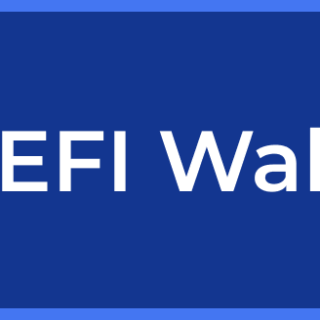Intro to Tokenomics
The term “tokenomics” merges the word “token” and “economics.” In other words, tokenomics signifies the economic details about how a specific coin functions monetarily.
Similar to how monetary policies are used in Central Banks, the goal is to maintain a sustainable economic model by ensuring an appropriate amount of asset supply, as well as being transparent about where it is distributed so investors can make informed decisions. Each project develops their own tokenomics, so it is important to go to a project’s website and read through its white paper. Despite the singular nature of a coin’s tokenomics, there are certain underlying commonalities among them, which are explained below.
How does the basic economy of a token operate? Simply put: supply and demand. If we dig deeper, tokenomics are built on the following factors:
Supply Distribution
Look in the whitepaper for information on when tokens will be released, and consider who will buy, sell, or hold this asset. Distribution specs might include information such as:
- Team allocation / advisors / seed sale
- How much of the token will be held by early team members? How does the team use money raised?
- Presales / private sale
- When is the token for sale, and to whom?
- Token Generation Event (TGE)
- Where and how will the tokens be bought?
- Marketing / Partners
- How well marketed is the project? Will it see mainstream adoption?
- Treasury / community incentives
- Will early supporters be rewarded? Is there a good treasury for volatile times?
Deflationary vs. Inflationary
If a project is inflationary this means that the token supply is increasing over time.
If a project is deflationary this means that the token supply is decreasing over time.
Most cryptocurrency is deflationary, so there will be a max supply, which creates scarcity. There are ways to decrease exposure to inflation, should that be required. Often, a network will use newly minted tokens to pay miners or stakers, which helps secure the network. If the project adopts a buy-back/burn model, each transaction will incur an extra fee that will be burned (i.e. removed from the market to decrease supply) or used to buy back the token.
Market Liquidity / Trading Volume
A token needs to be liquid on the markets, otherwise trading the token can be risky. If one buys a token that does not have much liquidity on the market, then they may not be able to sell it later, or will have to sell it with high slippage fees. Many projects incentivise LP (liquidity providers) by paying out a substantial APY to stakers/delegators. Other tokenomic models use liquidity bootstrapping events, where poolers contribute to the LBP to create an initial supply of trading liquidity and distribute the tokens.
Market Cap
What is a market cap? —The market cap of a project is the amount of money currently invested in a project—, and is considered a better way to compare different assets and their value, rather than simply the dollar value of the market price. Value will change from the initial market cap, over time, as inflation and deflation effects meet with supply and demand factors. It is calculated by multiplying the amount of tokens in circulation by the price of one token. The formula below shows the valuation of the investment compared to other projects as tokens are released:
Market cap = price of a token X number of tokens in circulation
Other terms of tokenomic interest include initial market cap, total supply, initial supply, and circulating supply.

